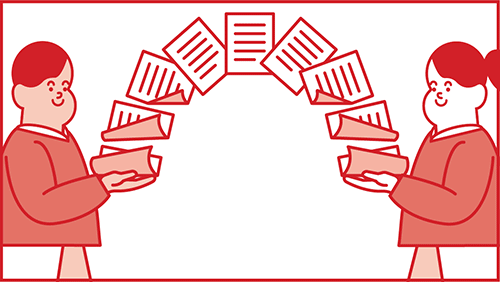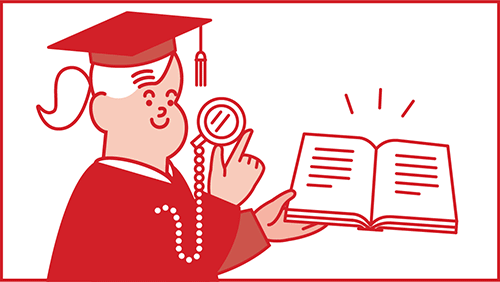For more stories like this, sign up for the PLANSPONSOR NEWSDash daily newsletter.
Considerations for Implementing a Phased Retirement Program
One of your most valued, long-term employees just announced his retirement and your reaction is mixed. You’re unexpectedly losing 20 years of experience and in-depth knowledge that will be difficult to replace, so the transition could be rough. But his departure will create advancement opportunities for other staff members, increasing the odds that you’ll be able to retain them.
A phased retirement program that avoids an employee’s immediate, complete transition to retirement could make situations like this more productive and less stressful for all parties. Tyler Papaz, director of private wealth with Cornerstone Advisors Asset Management in Bethlehem, Pennsylvania, says one major advantage to phased retirements is that employers can better formalize a succession plan for key employees.
“The glide path (or phased) retirement allows the employer to leverage the knowledge base of a seasoned employee and be more deliberate about imparting that knowledge to the successor,” Papaz says. External stakeholders also benefit because the transition allows customers and clients to build a relationship with the employee assuming the position. The same holds true for many other roles, including ones in which some internal systems and processes need to be maintained well after a person retires, he adds.
The federal government’s phased retirement program highlights the emphasis on knowledge transfer. “Phased retirement provides a new tool that allows managers to better provide unique mentoring opportunities for employees, while increasing access to the decades of institutional knowledge and experience that retirees can provide,” said then-U.S. Office of Personnel Management (OPM) Director Katherine Archuleta, when the program was announced.
With the federal program, participants are required to devote 20% of their time to some form of knowledge transfer activities.
A November 2019 report from the Society for Human Resource Management (SHRM) suggests that phased retirement can address two distinct groups of older employees. The first group includes employees who are still productive and would be difficult to replace; a phased program can help keep them working.
“Phased retirement programs can lead to higher engagement and improved well-being for employees nearing retirement, which ideally translates into higher productivity,” says Lauren Hoeck, senior director, retirement, with Willis Towers Watson in Arlington, Virginia.
The SHRM report describes the second cohort as “already ‘retired in place,’ signaled by a loss of interest in their work and a drop in productivity.” These workers should retire but don’t, which can create a frustrating uncertainty when it comes to their eventual departure dates. Phased programs can lead to more predictable retirement patterns, Hoeck says.
Older employees appear to be interested in working fewer hours. A survey, conducted by the Aegon Center for Longevity and Retirement, Transamerica Center for Retirement Studies and Instituto de Longevidade Mongeral Aegon, of 60,000 workers in 15 countries found that 57% of workers expect to have a phased transition into retirement either because they want to stay active or for financial reasons.
Formal vs. Informal Programs
Companies looking to accommodate employees’ desire to work less can consider formal and informal phased retirement programs. The federal government’s program, for instance, is formal, with eligibility, participants’ and managers’ duties, and timelines defined and agreed upon in advance. Informal programs are ad hoc: An older employee expresses a desire to work fewer hours and management decides whether and how to accommodate the arrangement. Both approaches have pros and cons.
Formal programs, compared with informal programs, are more predictable for employees, which could translate into higher engagement and retention, Hoeck explains. Formal programs also are more uniform, which may make it easier to equip managers who are talking to employees near retirement and can communicate options in advance.
“These programs have the potential for more predictable retirement patterns, especially if employees opting for phased retirement also communicate their anticipated future retirement date,” Hoeck says. “Finally, these programs help advance a culture that honors and supports longer-service, older workers.”
Eric Phillips, director of financial partnerships with 401(k) provider Human Interest in San Francisco, maintains that the downside of a formal program is that it can feel rigid. “Especially in a larger organization, trying to define the parameters of a program can be difficult when you’re trying to account for different roles and responsibilities,” Phillips says. “Is the retiree a manager and will he retain those responsibilities? Will there be a gradual ramp down? Over what time period? Is he able to do a part-time version of his role or will it require some shift in responsibilities? There’s a lot to think through.”
Papaz says he believes an informal program allows the employer to maintain greater flexibility and customization with implementation. It gives employers the ability to offer a phased retirement to people whose departure presents a risk to the organization, he notes.
Pattie Graves, human resource (HR) knowledge adviser with SHRM in Bel Alton, Maryland, points out that while informal programs can be more flexible and better targeted, there are possible drawbacks. They may lead to discrimination or disparate impact when selecting only certain employees for the program. Additionally, employees who are ineligible to participate might view the programs as showing favoritism or being unfair, says Graves.
Employers have been more likely to offer informal arrangements. SHRM’s 2019 “Employee Benefits” survey found that only 6% of employers had formal programs and that number hadn’t increased for several years. In contrast, 15% had informal programs in 2019, up from 10% in 2015. A 2018 Willis Tower Watson study also found much greater use of informal, case-by-case approaches (55%) versus formal arrangements (9%).
Benefits Considerations
Employers must also decide what benefits they will provide to phased-program participants. For example, from the employee’s perspective, the continued availability of employer-subsidized, group rate health insurance, for instance, could be the deciding factor in whether to start phasing into retirement.
Before the level of compensation comes into play, employers need to understand which benefits can adapt to a glide path retirement and which can’t, says Papaz. For example, eligibility in a defined contribution (DC) plan must be formulaic, whereas nonqualified plans are almost solely at the discretion of the employer.
“Some options and decisions for the company are dictated by employment status,” Papaz explains. “Retirement plan eligibility, some health care plans and other fringe benefits may require full-time employee status, which is more likely earlier in the phased retirement than later. Employers can offer extra cash compensation to cover some of that, but it is something they must consider.”
The benefits package can include non-financial offerings. Graves cites flexible work arrangements that allow older workers to step down from managerial roles into individual contributor roles, or shift to part-time or part-year opportunities. Offering ancillary services such as life coaches, support groups, legal services and financial planning can also help older workers prepare for retirement during the phasing years.
Regardless of whether a company adopts an informal or formal approach, creating a strategic plan for the program is a sound starting place, Hoeck says. This could mean establishing the organization’s objectives and inventorying current programs and usage, among other steps. “This approach ensures you are tackling the right problems, using thoughtful solutions, establishing a benchmark against which to assess progress and continuously evolving along with your workforce,” she says.


